Experience the flavours, architectural influences, Creole and Cajun culture, and people of the American Deep South in this vibrant and compact state in the United States. Best known for its famous port city, New Orleans, Louisiana has been shaped by all sorts of cultures since being settled by the French during the late 1600s.
Louisiana is credited with breathing musical sounds, such as Jazz and Blues into the world, and is one of the finest culinary destinations in the world, with Cajun-Creole dishes such as jambalaya and gumbo as Louisianan as it gets. New Orleans has a reputation as a party and entertainment hub in southern United States, as one of the world’s largest Mardi Gras carnivals transforms New Orleans into a pulsating hub of colourful costumes and floats for two weeks a year.
Contents
- What Is Louisiana Known For?
- 1- New Orleans
- 2- Cajun and Creole Culture
- 3- Mardi Gras
- 4- Jazz and Blues Music
- 5- Crawfish
- 6- The French Quarter
- 7- The Louisiana Purchase
- 8- Gumbo and Jambalaya
- 9- Reece Witherspoon and Jared Leto
- 10- Bayous
- 11- The Mississippi Delta
- 12- The Sazerac Cocktail
- 13- Tabasco
- 14- Poverty Point
- 15- Pelicans
- 16- Plantation Homes
What Is Louisiana Known For?
1- New Orleans
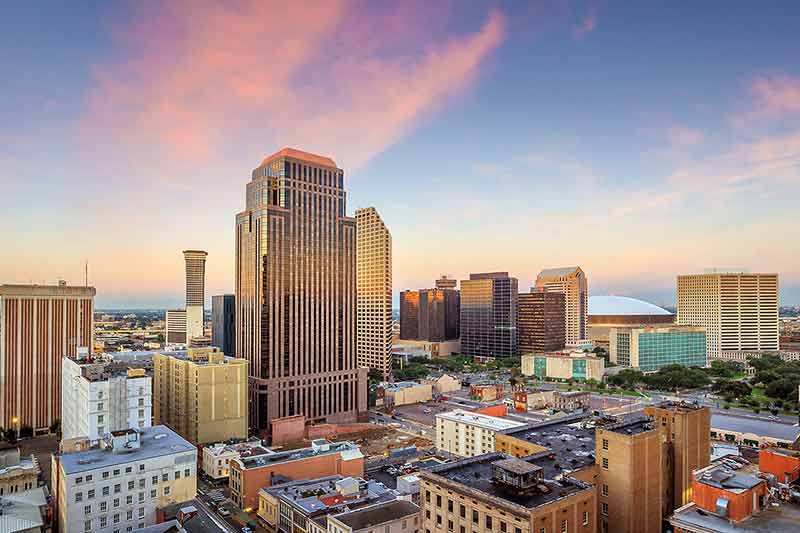
One of the finest cities in the Deep South, New Orleans, better known by its nickname “The Big Easy”, is a large urban sprawl situated in southern Louisiana that teems with diverse cultures, architectural styles, people and electric entertainment options.
Founded in 1718 by French immigrants, the city benefitted tremendously from its location near the Mississippi Delta and was the capital of French Louisiana right up until the territory’s incorporation into the United States in 1803 as part of the Louisiana Purchase.
New Orleans is a melting pot of French, Creole and Cajun influences which can best be experienced in the city’s one-of-a-kind culinary and live music scenes, with New Orleans credited with being the birthplace of both Jazz and Blues music.
One of the largest cities in the American South, New Orleans treats travellers to a good time, with the French Quarter, Bourbon Street, City Park and the annual Mardi Gras celebrations among the most popular places to visit.
Recommended tours:
- Steamboat Natchez Evening Jazz Cruise with Dinner Option
- French Quarter Historical Sights and Stories Walking Tour
2- Cajun and Creole Culture
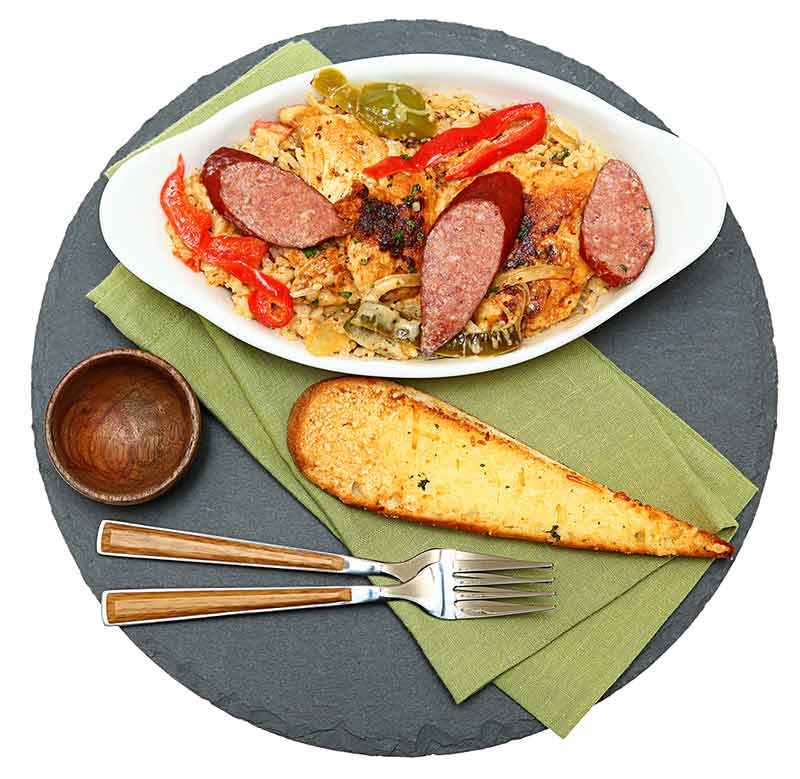
Defining the essence and soul of New Orleans and its people, the city’s vibrant Cajun and Creole background is something travellers and locals get to experience in virtually every corner of the city.
New Orleans’ Cajun and Creole influences can be traced back to the large influxes of French Europeans and African-Americans to southern Louisiana and modern-day New Orleans, whose distinct culinary styles, traditions, dialects and music genres were adopted by the Big Easy as its own.
Both extremely unique yet thriving throughout modern-day New Orleans, Cajun and Creole culinary tastes are renowned for their spicy dishes and include foods such as jambalaya and gumbo, iconic New Orleans delicacies that have helped the city become one of the world’s great culinary destinations.
Recommended tour: New Orleans Food Walking Tour of the French Quarter with Small-Group Option
3- Mardi Gras
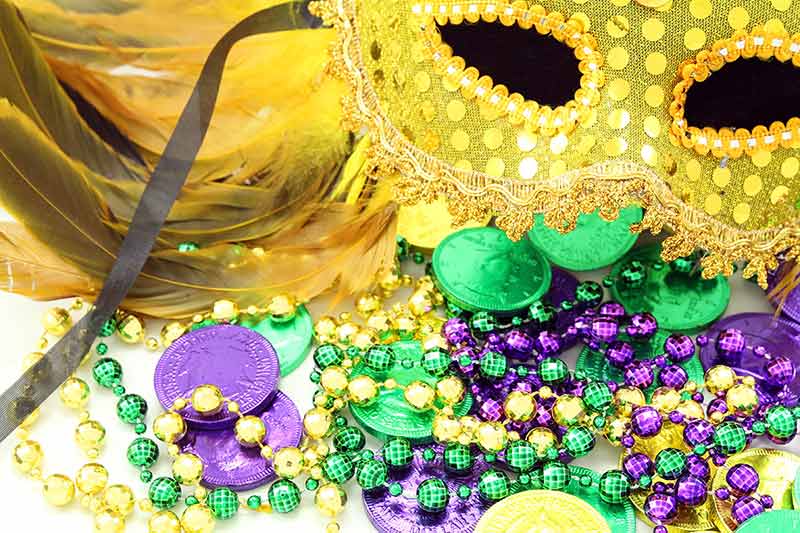
No single event is as big and as popular in New Orleans as Mardi Gras, an annual celebration accompanied by colourful parades and festivities celebrating the day before Three Kings Day.
Mardi Gras, which means “Fat Tuesday” in French, is a popular carnival celebration throughout the United States and Europe, though nowhere is the showpiece event performed on a larger scale than in New Orleans, which regularly draws well over 1.5 million festivalgoers every year.
The French Quarter, New Orleans’ most famous neighbourhood, transforms into a large masquerade ball accompanied by live entertainment, eye-catching costumes and glittering floats with parties lasting well into the morning.
Usually hosted between January and February, the annual spectacle is hosted over two weeks and is an iconic New Orleans event that must be experienced first-hand to truly appreciate.
Recommended tour: New Orleans Mardi Gras Walking Tour
4- Jazz and Blues Music
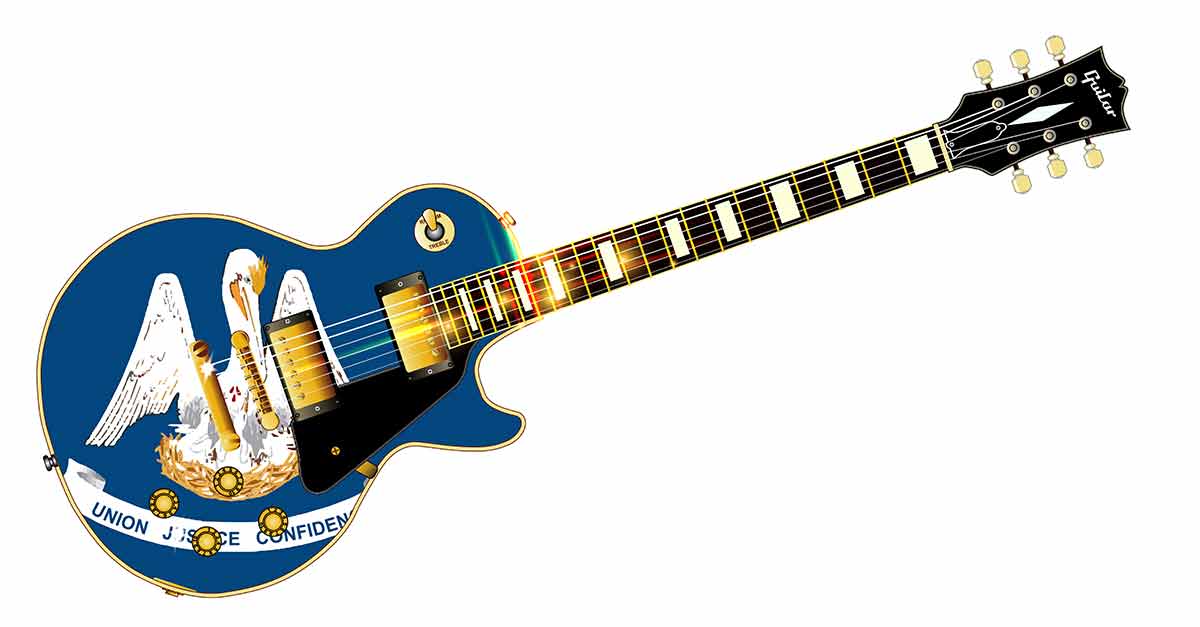
One of Louisiana’s biggest exports is its culture, particularly its music scene, which has produced two of the South’s most iconic musical genres – Jazz and Blues.
Both Jazz and Blues music can trace their roots back to Louisiana where the two music genres were popularised during the 20th century in and around New Orleans by African-American musicians in the Deep South.
Louisiana and specifically New Orleans has produced several of Jazz and Blues’ biggest influences and musicians, with stars such as Louis Armstrong and King Oliver.
Heard in bars and speakeasies across New Orleans and Louisiana or hop aboard the Paddlewheeler Creole Queen Jazz Cruise, there’s simply no better place to enjoy jazz and blues music than the Bayou State.
5- Crawfish
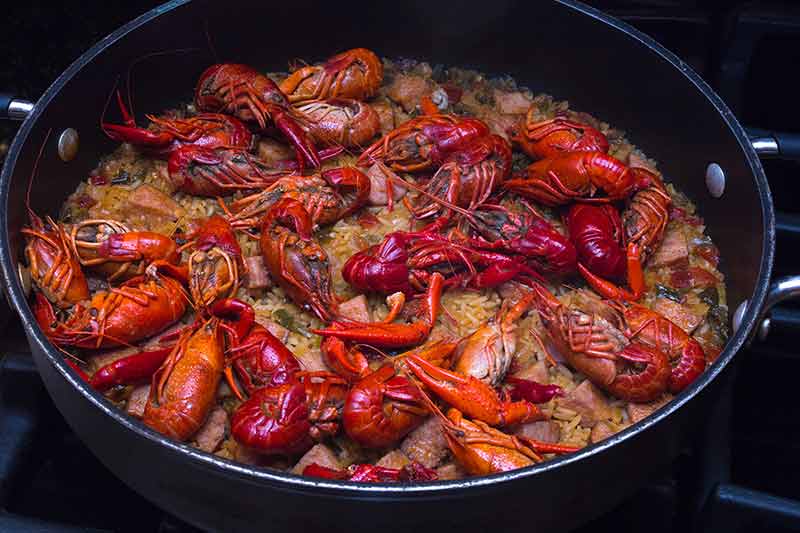
Louisiana’s deep-rooted connection to rivers and waterways can best be experienced through the state’s fascinating culinary scene, with crawfish among the state’s most widely enjoyed seafood delicacies.
Crawfish is often combined with authentic Creole and Cajun flavours to create Louisianan staples such as gumbo and jambalaya, with crawfish thriving in Louisiana’s slow-moving bayous.
Formally known as “Procambarus clarkii”, Louisiana crawfish are among the Bayou State’s biggest exports and are renowned for their bright-red shells, with Louisiana recognised as the largest producer of crawfish in the United States.
Recommended tours:
6- The French Quarter
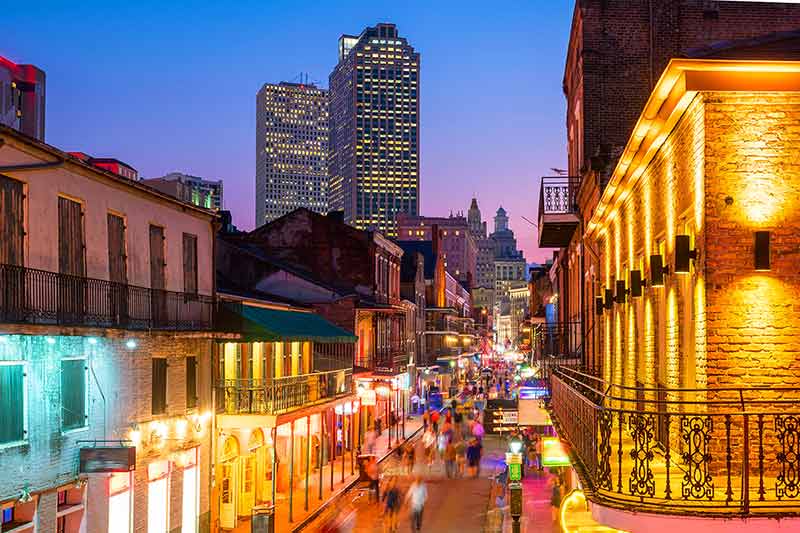
Few neighbourhoods are as famous, well-travelled, colourful and as architecturally distinct as New Orleans’ French Quarter, the oldest residential district in the Big Easy and the city’s unofficial entertainment epicentre.
The French Quarter, or the “Vieux Carré” as it’s also commonly called by locals, was first settled in 1718 by French-Canadian Jean-Baptiste Le Moyne de Bienville, who served as one of the earliest governors of the French Louisiana territory.
The area began attracting wealthy residents from across the nation thanks to New Orleans’ booming cash crop economy of the 1800s and soon New Orleans was the third-largest metro area in the United States.
Large sections of the French Quarter date back to the 18th century, with the entire neighbourhood declared a National Historic Landmark to preserve its uniqueness, historical significance and cultural importance to New Orleans.
Also read:
- 20 Landmarks in Louisiana
- 20 Beaches in Louisiana
- 20 Cities in Louisiana
- 6 Louisiana National Parks
- New Orleans At Night
- 20 Museums in New Orleans
- New Orleans French Quarter
- Ultimate Swamp Tour
- 20 Things To Do In Baton Rouge
- 20 Things To Do In New Orleans
- Where To Stay In New Orleans
- 20 State Parks in Louisiana
- 15 Things Louisiana Is Famous For
7- The Louisiana Purchase
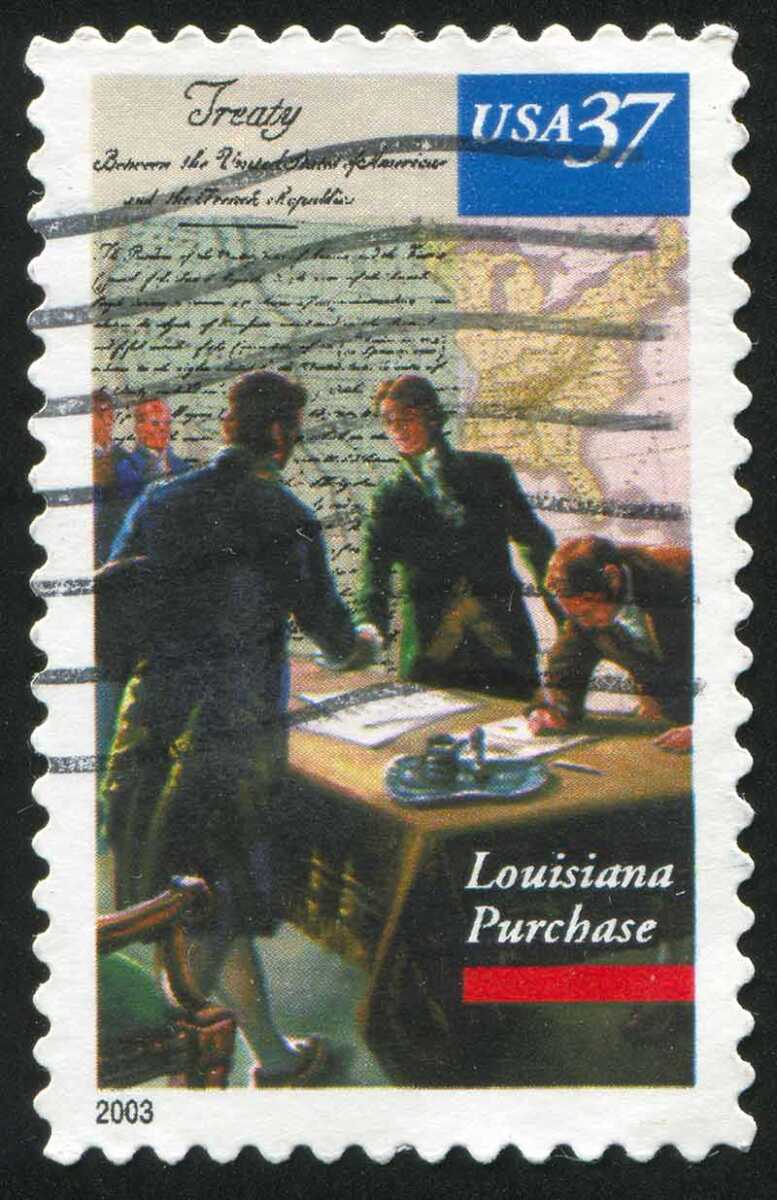
One of the defining moments of 1800s America was without a doubt the Louisiana Purchase of 1803, an unprecedented trade agreement between the United States and France.
The Louisiana Purchase saw large swaths of land stretching from the Mississippi River Delta to the Canadian border be transferred to US control in exchange for $15 million and included modern-day US states such as Iowa, Oklahoma, Kansas, Nebraska, Missouri, the Dakotas and Louisiana.
The event led to Louisiana’s statehood and acceptance into the Union just nine years later and firmly established the United States’ control over the nation’s interior, which would later provide the platform to further explore the American West and settle the West Coast.
8- Gumbo and Jambalaya
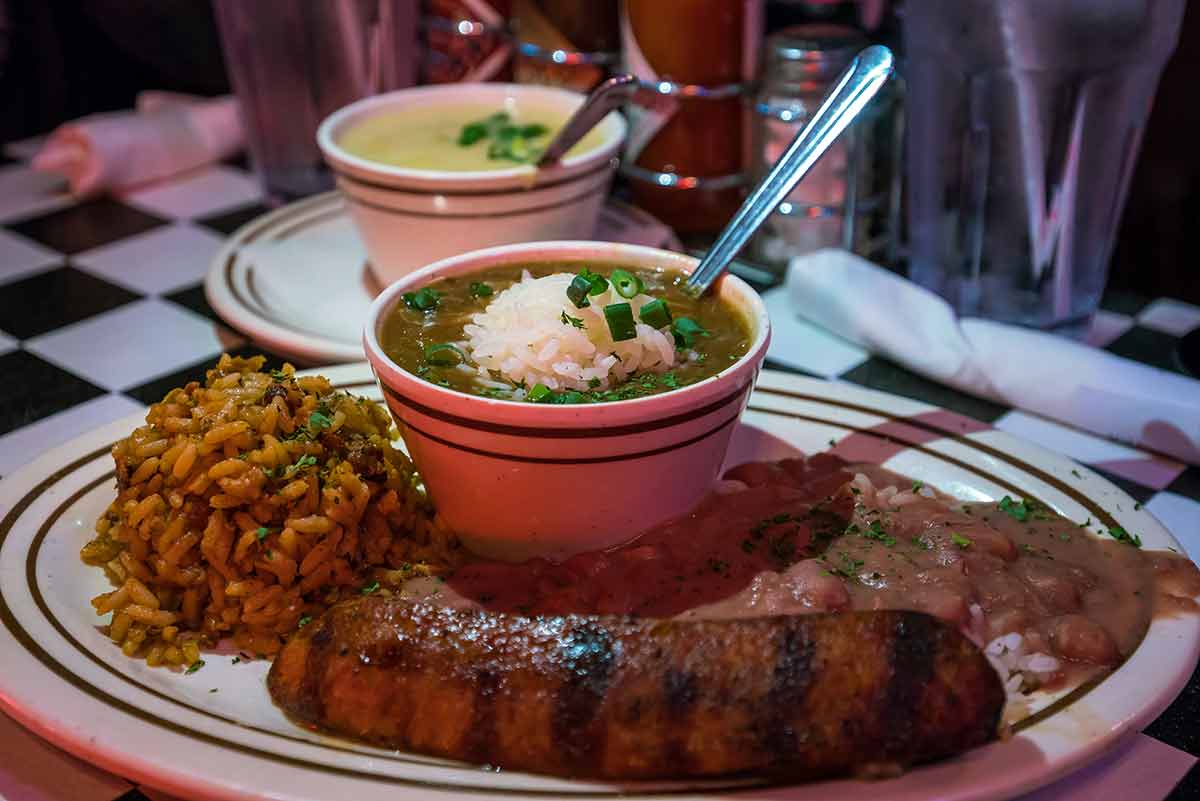
Gumbo and jambalaya are two proudly Louisianan culinary staples inspired by the region’s Cajun and Creole influences as well as the bountiful natural resources of the Bayou State.
Although gumbo and jambalaya might appear similar at first glance, their uniqueness stems from the way they incorporate rice into their preparation method, with gumbo typically served on a portion of rice while jambalaya usually involves cooking rice into the dish before being served.
Both dishes symbolise a mix of Cajun-Creole culture, with both incorporating flavours and ingredients readily available throughout Louisiana such as shellfish, meats and vegetables.
Once considered to be “poor man’s food”, gumbo and jambalaya have developed into quintessential Louisiana tastes served at cookouts and in high-end restaurants across the Bayou State.
9- Reece Witherspoon and Jared Leto
Louisiana has long had a reputation for producing world-class entertainers, musicians and actors on the silver screen, with Reese Witherspoon and Jared Leto, two of the 21st century’s most recognisable actors, both hailing from the Bayou State.
Born on March 22, 1976, in New Orleans, Louisiana, Reese Witherspoon gained notoriety following her acting debut in “The Man in the Moon” as a teenager and got her breakthrough role in the 1999 film “Cruel Intentions”.
Named by Time Magazine as one of the top 100 most influential women in the world, Witherspoon has snatched up numerous awards during her illustrious career in front and behind the camera, with an Academy Award, a Primetime Emmy Award and two Golden Globe awards to her name.
Fellow Louisianan actor Jared Leto was born in Bossier City on December 26 1971 and is a multi-talented entertainer who is the lead songwriter for the band “Thirty Seconds to Mars” in addition to acting in films such as “Dallas Buyers Club” and “Fight Club”.
10- Bayous
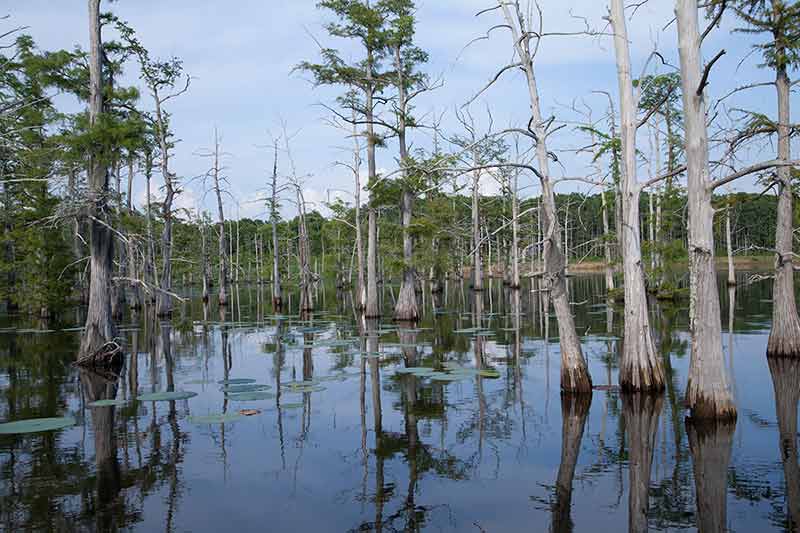
Putting the bayou in the Bayou State, Louisiana’s vast marshes and swampland, better known as bayous, are renowned for their size and biodiversity, with bayous found across the southeast United States.
Bayous are notoriously shadow, murky and densely forested networks of slow-moving waterways dotting large parts of Louisiana and are great breeding grounds for fish, shellfish and reptiles such as alligators, crawfish and catfish.
Bayou Bartholomew, the longest bayou in the world, can be found in northern Louisiana and runs for more than 375 miles (603 km), with bayou tours and Louisiana’s many preserved wildlife areas perfect for enjoying these unique natural features which Louisiana has become so renowned for.
Recommended tour: New Orleans Swamp and Bayou Boat Tour with Transportation
11- The Mississippi Delta
Perhaps the biggest reason why Europeans decided to settle in modern-day Louisiana is the Mississippi River, more specifically the Mississippi Delta, which connects the longest river in the United States with the open waters of the Gulf of Mexico.
Situated right at the mouth of the Mississippi is New Orleans, the Bayou State’s largest city and a major economic power in the Deep South which is home to one of the largest and busiest deep-water ports in the United States.
The Mississippi Delta is much more than just a vital economic boon for the southern United States and is an important natural resource that’s home to an incredibly diverse array of fauna and flora.
12- The Sazerac Cocktail
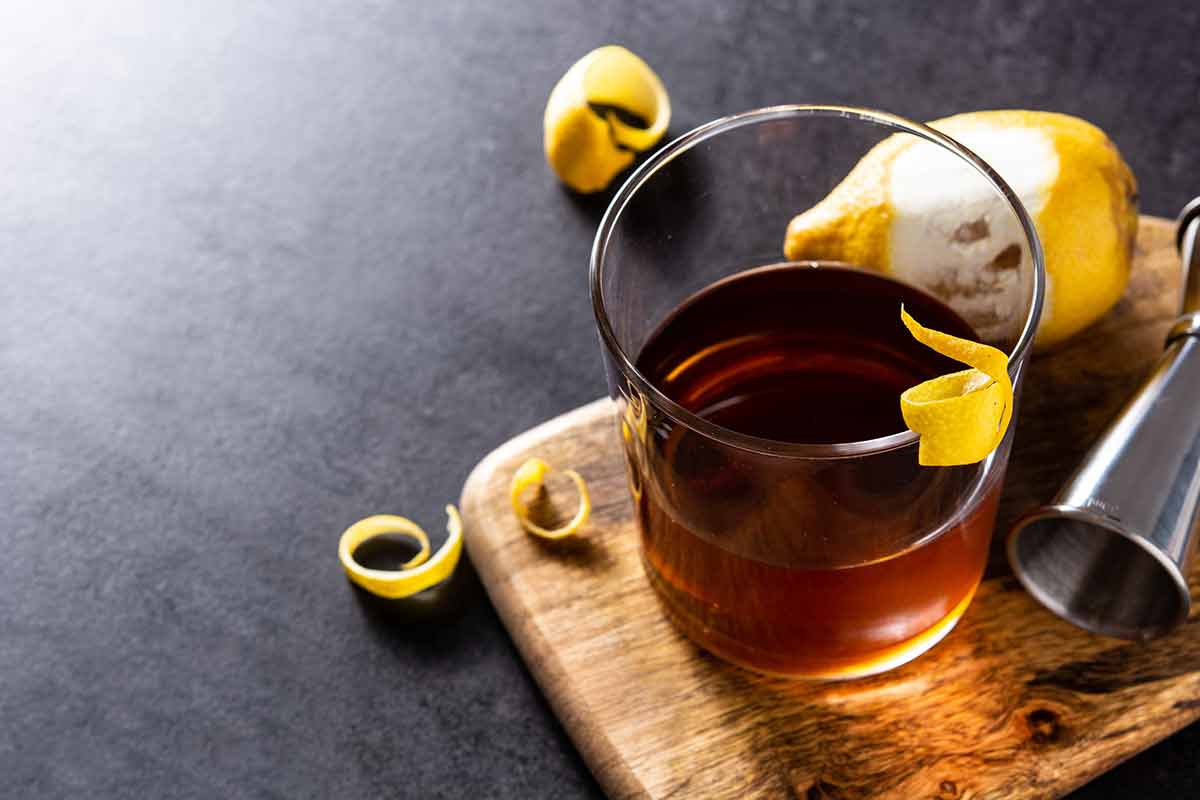
Best known for its scintillating and flavourful Cajun and Creole dishes, Louisiana and the Big Easy is also where the Sazerac Cocktail is said to have originated.
According to legend, the Sazerac Cocktail was first mixed by Aaron Bird sometime during the mid-1800s in New Orleans using Sazerac cognac imported from France and bitters produced by local apothecary owner Antoine Amedie Peychaud.
While a dispute remains as to which of the two New Orleans natives should be credited with the drink’s invention, it remains an iconic Louisiana beverage and was declared New Orleans’ official cocktail by the Louisiana Legislature in 2008.
Recommended tours:
- New Orleans Cocktail and Food History Tour
- New Orleans Original Craft Cocktail Walking Tour
- New Orleans Cocktail History Walking Tour in the French Quarter
13- Tabasco
Enjoyed around the world by lovers of a bit of Cajun and Creole spice in their favourite dishes, Louisiana’s famous tabasco sauce has been produced, bottled and shipped from Avery Island since 1868.
Tabasco was created by Edmund McIlhenny in 1868 and is made from a secret recipe of tabasco peppers, salt and vinegar, with several additional flavours and varieties introduced under the Tabasco brand, including a green Jalapeño-based sauce and a Buffalo-style hot sauce.
Visitors to Avery Island can experience the 150+ year history of Tabasco sauces at the on-site Tabasco museum, which opens to the public for self-guided tours of the facility, including the Pepper Greenhouse, Tabasco’s Salt Mine Diorama and the Barrel Warehouse.
14- Poverty Point
The Poverty Point UNESCO World Heritage Site is arguably one of the most important archaeological sites in the United States as it proves the existence of technologically advanced civilizations in Louisiana as early as 1700 BC during North America’s Late Archaic Period.
Although seemingly little more than earthen mounds of dirt, the site is believed to have once been a trading hub of sorts for the unknown Poverty Point People as part of an empire which was rumoured to have spanned from the Mississippi Delta to further south along the Gulf of Mexico.
The site was abandoned by the Poverty Point People around 1100 BC, with little else known about this lost North American civilization or the exact reason behind the mounds’ existence other than that the mounds are older than Latin America’s Mayan structures, making it an alluring attraction in northern Louisiana that’s one of the state’s lesser-known features.
15- Pelicans
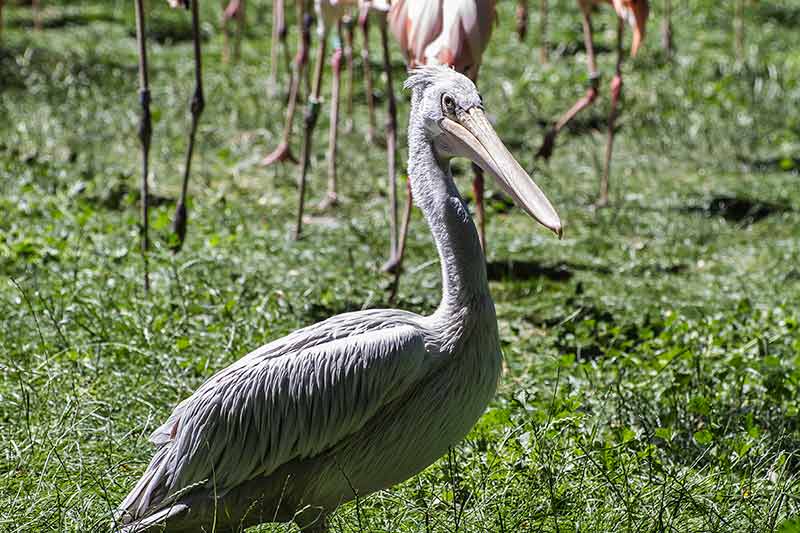
With its unofficial nickname being the “Pelican State”, is perhaps no surprise to learn that Louisiana’s Gulf Coast is the perfect breeding ground for pelicans, specifically brown pelicans, which have been the official state bird of Louisiana since 1966.
Brown Louisiana pelicans nest along the Bayou State’s barrier islands and migrate south to escape the colder temperatures in the north between November and April.
Easily recognisable due to their majestic appearance and large stature, Louisiana pelicans have been popularised throughout Louisiana pop culture and was chosen as the mascot, team nickname and logo of the NBA’s New Orleans Pelicans.
16- Plantation Homes
Leftover remnants of the Deep South’s antebellum period of the early 1800s, plantation homes are some of the most lavish estates in Louisiana.
Characterised by their Georgian, Greek-Revival and Neo-Classical designs and facades, Louisiana plantation homes are renowned for their architectural uniqueness, with many plantation homes across the Bayou State declared historic landmarks.
One such plantation estate is the Oak Alley Plantation, which was built in 1837 and is today a tourable attraction that comes complete with an on-site restaurant.
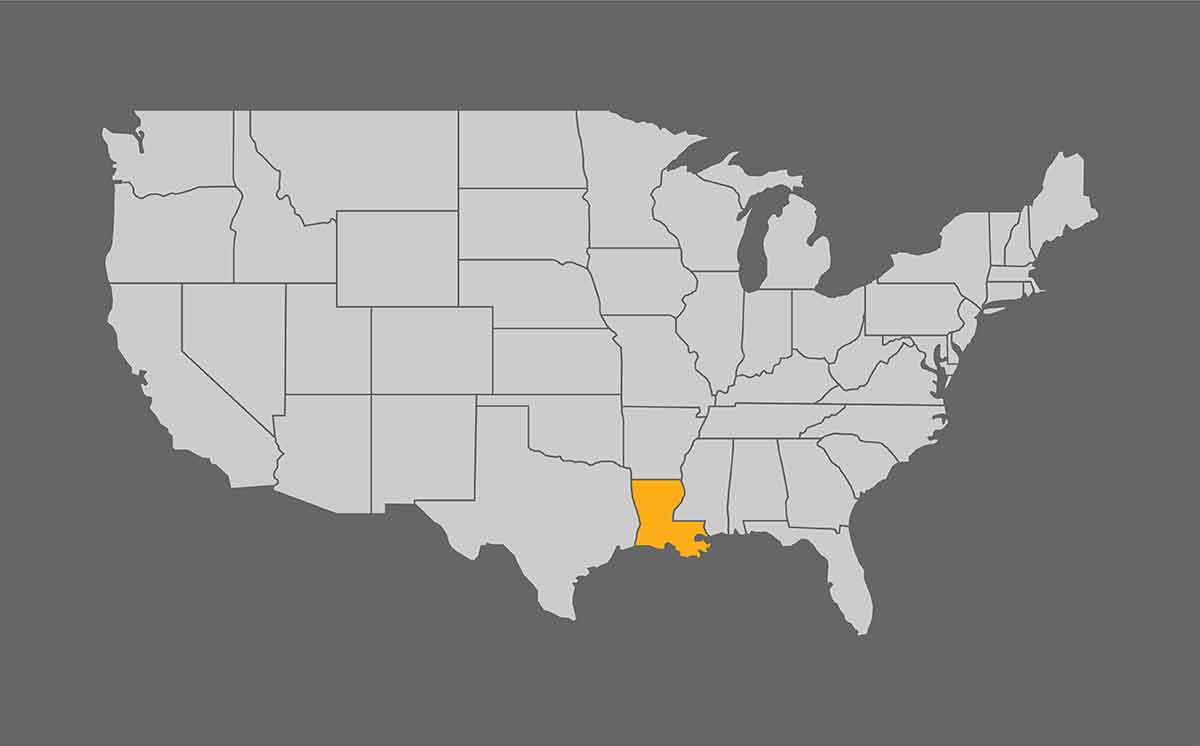
You may also be interested in:
- What is Turkey known for?
- What is Portugal known for?
- What is Greece known for?
- What is France known for?
- What is Belgium known for?
- What is Switzerland known for?
- What is Poland known for?
- What is Australia known for?
- What is Mexico known for?
- What is Germany known for?
- What is Croatia known for?
- What is Hungary known for?
- What Is Romania known for?
- What is The Netherlands known for?
- What is Scotland known for?
- What is Canada known for?
- What is Japan known for?
- What is China known for?
- What is Singapore known for?
- What is Vietnam known for?
- What is Thailand known for?
- What is Cuba known for?
- What is Argentina known for?
- What is Colombia known for?
- What is Spain known for?
- What is Italy known for?
- What is Ireland known for?
- What is Oregon known for?
- What is Colorado known for?
- What is Tennessee known for?
- What is Hawaii known for?
- What is Alabama known for?
- What is Illinois known for?
- What is Mississippi known for?
- What is Nevada known for?
- What is Maine known for?
- What is Idaho known for?
- What is Delaware known for?
- What is Maryland known for?
- What is Wisconsin known for?
- What is Miami known for?
- What is Virginia known for?
- What is West Virginia known for?
- What is Massachusetts known for?
- What is Boston known for?
- What is Florida known for?
- What is Kentucky known for?
- What is Indiana known for?
- What is Montana known for?
- What is Nebraska known for?
- What is Pennsylvania known for?
- What is Vermont known for?
- What is Arizona known for?
- What is California known for?
- What is South Carolina known for?
- What is North Carolina known for?
- What is Texas known for?
- What is Michigan known for?
- What is Ohio known for?
- What is Louisiana known for?
- What is Oklahoma known for?
- What is New York known for?
- What is Georgia known for?
- What is Utah known for?
- What is Connecticut known for?
- What is Rhode Island known for?
- What is Iowa known for?
- What Is Minnesota known for?
- What is New Hampshire known for?
- What is Arkansas known for?
- What is New Jersey known for?
- What is Missouri known for?
- What is North Dakota known for?
- What is South Dakota known for?
- What is Wyoming known for?
- What is Alaska known for?
- What is Washington known for?
- What is Seattle known for?
- What is New Mexico known for?
- What is Kansas known for?
- What is San Francisco known for?
- What is Chicago known for?
- What is Denmark known for?
- What is Norway known for?
- What is Sweden known for?
Plan Your Trip

Rent A Car – Find the best car rental rates at Discover Cars. They compare car hire companies to provide you with the best deal right now.

Find A Hotel – If you’re curious about this article and are looking for somewhere to stay, take a look at these amazing hotels.





